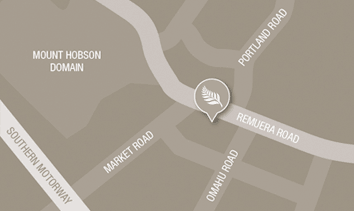Our Plastic Surgeons
Skilled and experienced plastic surgery experts
All four specialists are New Zealand trained plastic and cosmetic surgeons with a vast surgical experience over many years and many thousands of patients.
Frequently Asked Questions
What is Basal Cell Carcinoma (BCC)?
This is the most common type of skin cancer, but fortunately it is usually cured by surgery. It can occur in young adults, but is more common in the elderly.
How does it present?
Basal cell carcinoma can present as a small, pearly nodule, or as a small, crusted, bleeding ulcer. Occasionally it is far more difficult to see and may present at a more advanced stage.
Usually we can recognise basal cell carcinoma by examining the area of concern. If there is any doubt, we will arrange a small test called a biopsy – using local anaesthetic, a small sample of tissue is removed and examined by a pathologist for signs of skin cancer.
What does the treatment involve?
Basal cell carcinoma is best treated by surgical removal. For small cancers this can be performed under local anaesthetic, but a general anaesthetic may be more comfortable for larger tumours.
The cancer is removed along with a small margin of healthy tissue to ensure excision of any invisible ‘fingers’ or ‘roots’ of tumour. The tissue is examined later by a pathologist to ensure all the cancer has been removed.
Occasionally we will ask a pathologist or dermatopathologist to be present at the surgery to test the margins of the tissue during the operation. These techniques are known as ‘frozen section’ and ‘Mohs’ examination. When the tumour has indistinct margins, or is in a critical area, this can ensure complete removal of the cancer.
After removing the cancer, the wound edges are accurately stitched, usually leaving a straight line scar. With time this will fade and become less noticeable. For critical areas on the face, or for larger cancers where the wound cannot be stitched up, we will use either a skin graft or a skin flap to heal the wound. These are advanced plastic surgical techniques in which we have extensive expertise.
Are there alternatives to skin cancer surgery?
Although the most successful method of treatment is surgery, sometimes a very early cancer can be treated by freezing the skin with liquid nitrogen. Examination some months later is advised to be sure the cancer has not returned.
Radiotherapy is occasionally used to treat basal cell carcinoma when surgery isn’t possible. If you are unsuitable for surgery, we will arrange for an opinion from a radiotherapy specialist.
What is the recovery process?
For small local anaesthetic operations, many people can return to work with a small dressing the next day, as long as they are careful with activities. Stitches are removed at five to seven days, but strenuous activity should be avoided for three weeks.
In cases where more than one skin cancer is removed at the same time, this can slow your return to normal activities.
What is Squamous Cell Carcinoma (SCC)?
SCC shares many of the features of basal cell carcinoma This is the second most common form of skin cancer and is also induced by sun exposure. Many patients have both BCCs and SCCs existing at the same time and treatment for both skin cancers is similar.
How does it present?
Squamous cell carcinoma can present as a red or crusted lesion, or a small, non-healing ulcer.
What does the treatment involve?
In general, squamous cell carcinoma can be cured by prompt surgical treatment, (see treatment for Basal cell carcinoma) but occasionally the cancer can spread to involve the lymph nodes or ‘glands’ of the groin, armpit or neck. If this occurs, further surgery may be required to remove these glands.
As with basal cell carcinoma, squamous cell carcinoma may be treated by radiotherapy. At times the combination of surgery and radiotherapy is required.
Melanoma
In New Zealand the rate of melanoma is the highest in the world. It is the least common of the three forms of skin cancer, but is by far the most serious.
Treatment should be prompt when melanoma is suspected, as early detection and treatment can be curative.
Melanoma is a cancer of the pigment cells of the skin. In their normal state, these cells give us our skin colour and may clump together as moles. Most moles are benign, but some moles can turn into melanomas.
How does skin cancer present?
Non-cancerous moles tend to have a symmetrical round or oval shape, with a uniform tan, brown, or black colour. They may be flat, or raised into a small nodule.
Medical advice should be sought if a mole shows any change, such as:
- Change in colour
- Change in shape
- Change in size
- Itching or bleeding
At NZIPCS we see many patients with concerns about moles. Often a small operation to remove the mole will allow a pathologist to give a definite diagnosis of whether the mole is benign or cancerous. In many instances, a mole with no sinister features can be left untreated.
We also see many patients who have previously had a mole biopsied by their general practitioner or dermatologist, and have a diagnosis of melanoma. In such cases, we can give further expert advice and treatment.
How serious is it?
The prognosis with melanoma is related to how advanced the disease is when it is diagnosed. The abnormal cells first spread across the surface of the skin, then begin to spread downwards, eventually breaking free and travelling to the lymph nodes (‘glands’), and then progressing on to other sites in the body.
When the melanoma is very thin (i.e. less than 0.76 mm thick, or confined to the very upper levels of the skin), the chances of cure are better than 90 percent. However, as the thickness progresses to several millimeters, the prognosis becomes poorer.
Sometimes the melanoma has already spread to the glands in the groin, armpit or neck, and a more complex operation is needed to remove the affected glands. If required, a chest X-ray and CT or MRI scan will be requested to check for further spread.
Every individual’s prognosis is different. Whilst we can counsel you on your risks, it pays to keep a positive attitude about the future, as some people with very thick melanomas can live for many years.
What does skin cancer treatment involve?
The first treatment for melanoma is to excise a larger piece of tissue. This removes any potential invisible melanoma deposits that may have been left after the biopsy. Often several centimetres of tissue may need to be removed, and it is not uncommon for a skin graft or skin flap to be required. However, in many cases a simple straight scar is all that remains.
If the melanoma is beyond the earliest stages, we may discuss a technique known as ‘sentinel node biopsy’. This new technique, which uses a combination of radiation and injected dye, can locate the most likely lymph node to have been affected by cancer. By removing and examining this node, we can see if the melanoma has spread and decide whether further removal of the glands is required.
Despite enormous research into alternative treatments for melanoma, surgery remains the principal treatment. When required, we will arrange a consultation with an oncologist (medical cancer specialist) to discuss other treatment options.
What is the recovery process?
In general, there are few serious surgical complications associated with skin cancer surgery. Occasionally the pathology report will indicate that further tumour may still be present after surgery. This may require another operation to remove extra tissue.
For small local anaesthetic operations, many people can return to work with a small dressing the next day, as long as they are careful with activities. Stitches are removed at five to seven days, but strenuous activity should be avoided for three weeks. Often more than one skin cancer is removed at the same time, which can slow down your return to normal activities.
Regular follow-up is very important if you have had a melanoma. This is to check for any signs of the cancer returning and any possible new melanomas.
How much will skin cancer treatment cost?
If you would like to know more about plastic surgery pricing, please view our Pricing page for an indication of what could be expected. You can also request a brochure or contact us for a personal consultation.
Request a complimentary consultation
Meet with our nurses for a complimentary, no obligation cosmetic surgery consultation to discuss procedures, processes and costs




